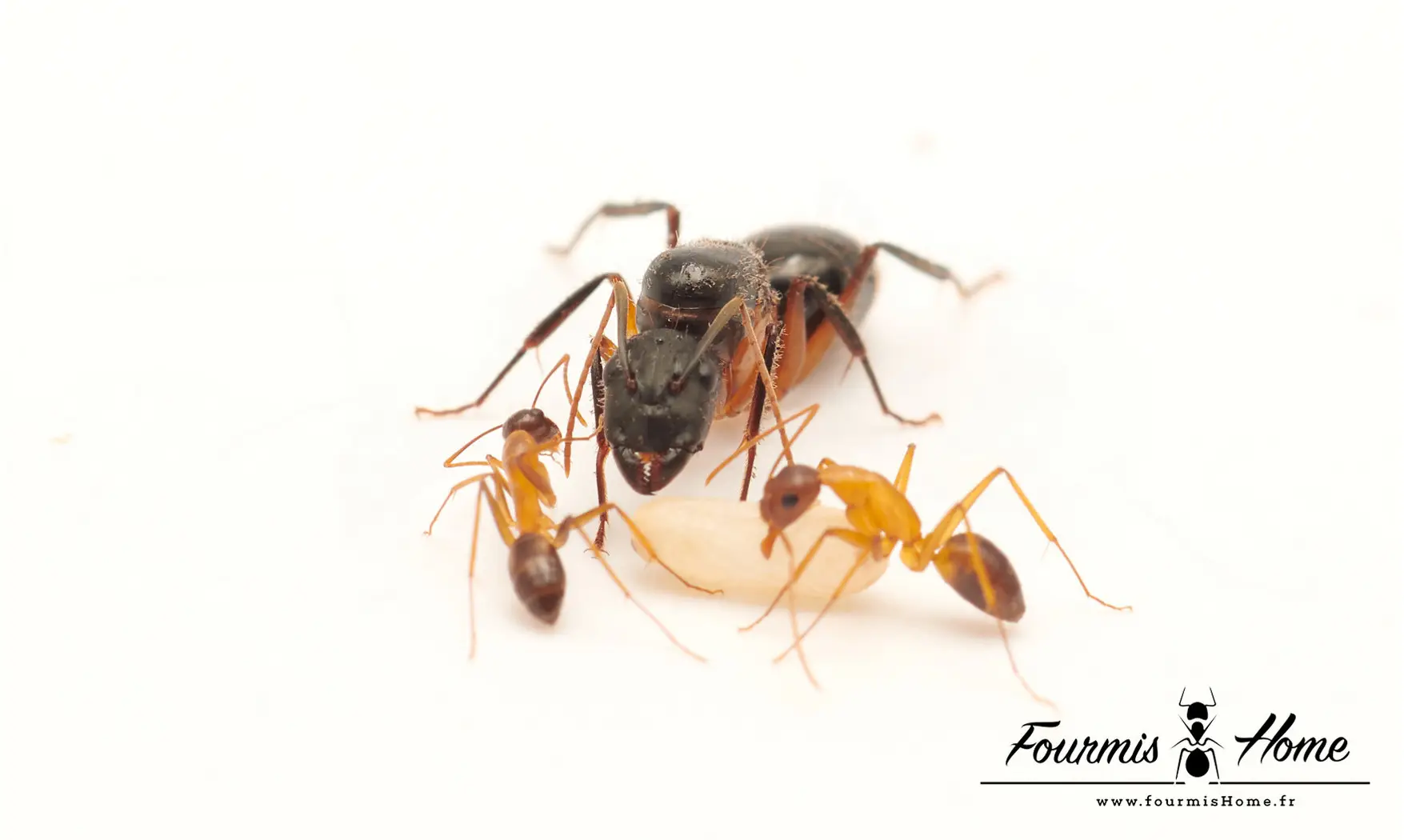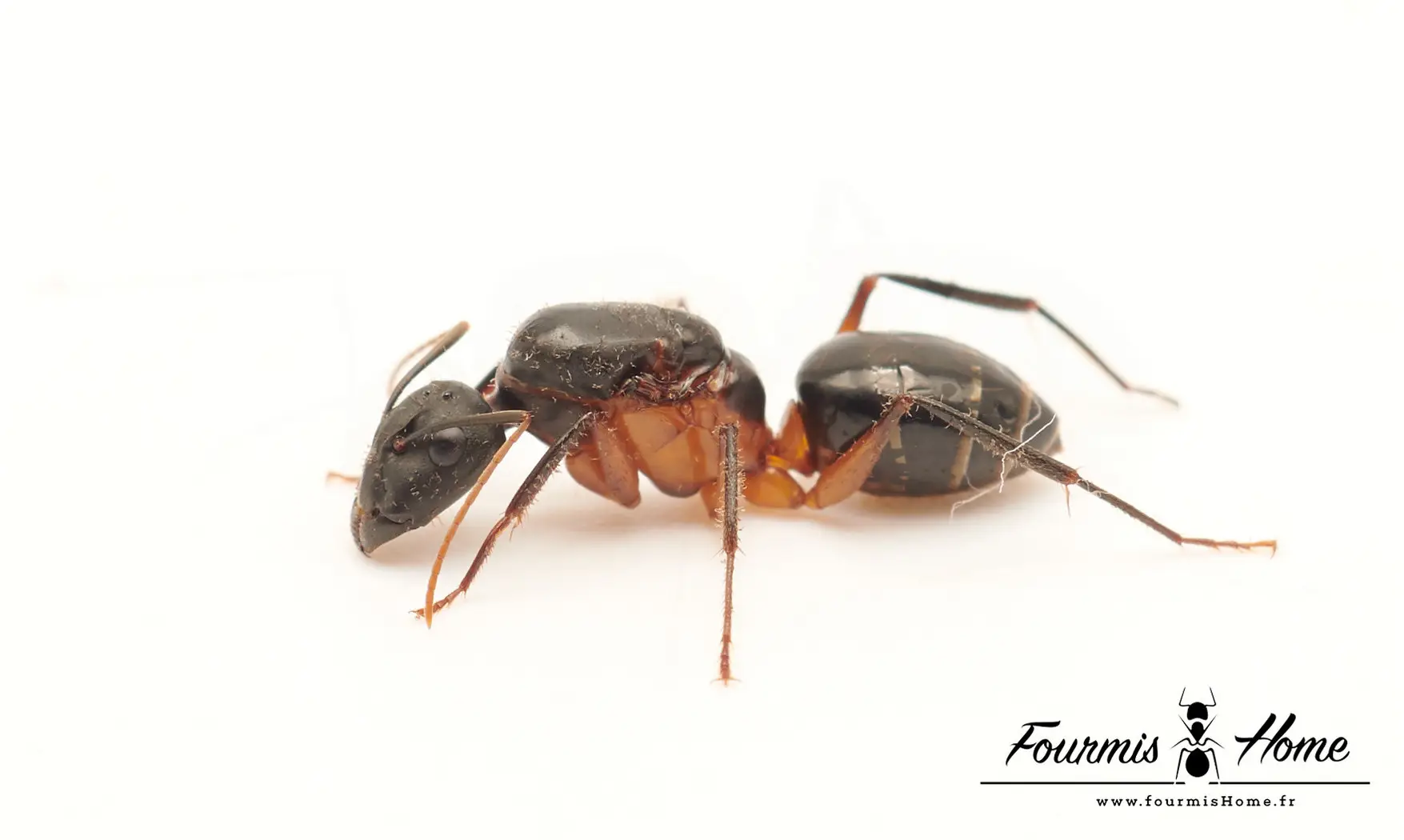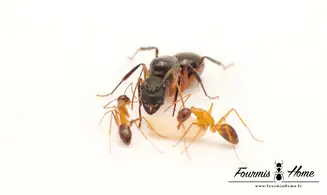



Camponotus arnoldinus
Reference : CFOUR-011
69.90€
Available
Latin name: Camponotus arnoldinus
Taxonomy: Subfamily: Formicinae, Tribe: Camponotini
Breeding level: Beginner, just provide a good temperature
Geographical distribution: South Africa
Habitat: Prefers steppe, dry grasslands
Colony form: Monogynous
Queen: Size: 15 - 18mm Color: Head and Gastre black, Thorax red to reddish yellow,
Workers: Size: 8 - 12mm Color: Head and Gastre black, Thorax red to reddish yellow
Major: Size 14 - 16mm Color: Head and gastre black, Thorax red to reddish yellow
Male: Size: 15mm Color: Dark Brown
Food: Honeydew and insects: such as flies, mealworms, mosquitoes and small locusts; also fruit
Humidity: Hunting area: 30 - 50% Nest: 50 - 60%
Temperature: Hunting area: 20 - 32 ° C Nest: 24-28 ° C
Hibernation: No, but a winter break from November to March at room temperature is recommended
Type of nest: All types of nests will suit them, tube foundation with water reserve and then dry nest with a drinker in the hunting area.
Description: Camponotus arnoldinus is one of the largest ants in Africa and shows high activity outside the nest and during foraging. They are very aggressive towards other ants. There is a lot of activity in the evening and at night.
Development: Swarming from June to July
Foundation: Occurs in a cloistered manner (without feeding) Development: 45 days from egg to worker (depending on temperature)
Size of the colony: 10,000 individuals, the queen can reach the age of 20 years.
Taxonomy: Subfamily: Formicinae, Tribe: Camponotini
Breeding level: Beginner, just provide a good temperature
Geographical distribution: South Africa
Habitat: Prefers steppe, dry grasslands
Colony form: Monogynous
Queen: Size: 15 - 18mm Color: Head and Gastre black, Thorax red to reddish yellow,
Workers: Size: 8 - 12mm Color: Head and Gastre black, Thorax red to reddish yellow
Major: Size 14 - 16mm Color: Head and gastre black, Thorax red to reddish yellow
Male: Size: 15mm Color: Dark Brown
Food: Honeydew and insects: such as flies, mealworms, mosquitoes and small locusts; also fruit
Humidity: Hunting area: 30 - 50% Nest: 50 - 60%
Temperature: Hunting area: 20 - 32 ° C Nest: 24-28 ° C
Hibernation: No, but a winter break from November to March at room temperature is recommended
Type of nest: All types of nests will suit them, tube foundation with water reserve and then dry nest with a drinker in the hunting area.
Description: Camponotus arnoldinus is one of the largest ants in Africa and shows high activity outside the nest and during foraging. They are very aggressive towards other ants. There is a lot of activity in the evening and at night.
Development: Swarming from June to July
Foundation: Occurs in a cloistered manner (without feeding) Development: 45 days from egg to worker (depending on temperature)
Size of the colony: 10,000 individuals, the queen can reach the age of 20 years.

